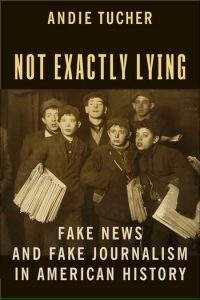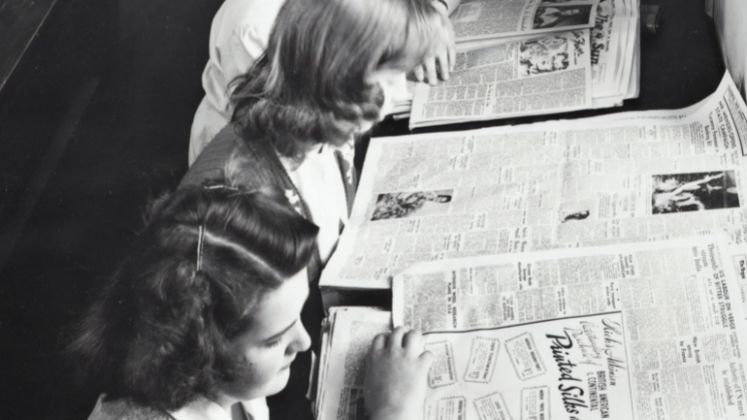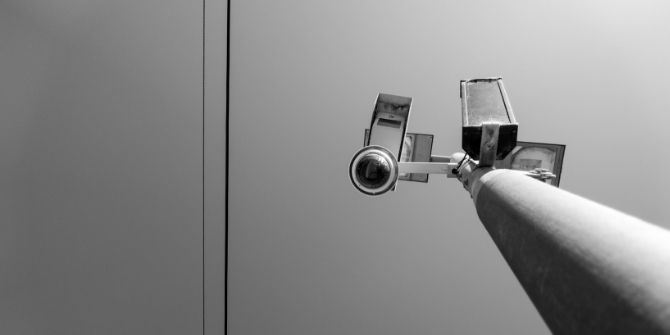In Not Exactly Lying: Fake News and Fake Journalism in American History, Andie Tucher explores how journalistic practice has often pivoted on disinformation throughout US history. This is a first-rate study that will give readers a greater understanding of the origins, role and impact of fake news in the past and present, writes Jeff Roquen.
Not Exactly Lying: Fake News and Fake Journalism in American History. Andie Tucher. Columbia University Press. 2022.
 Find this book (affiliate link):
Find this book (affiliate link):![]()
In January 2017, a significant portion of America and the world remained stupefied by the unexpected election of Donald Trump to the US presidency. A day before the Women’s March, whereby millions turned out on US streets and across the world, the new Press Secretary, Sean Spicer, not only accused the mainstream media of liberal/leftist bias. He also falsely stated that Trump’s presidential inauguration constituted ‘the largest audience to ever witness an inauguration – period’. Spicer had unveiled a core component of White House strategy – a campaign to discredit centrist journalism. Over the course of his four-year term, Trump proceeded to dismiss press reports as ‘fake news’ at an average of more than 200 occasions per year. The concept of ‘fake news’ began to rage in debates across the country. Indeed, approximately half of all Americans still question the reporting integrity of major media outlets. How did such a venomous contest over political narratives arise?
To understand how American politics has always pivoted on ‘fake news’, Andie Tucher, a scholar at the Columbia Journalism School, has produced a first-rate study in Not Exactly Lying: Fake News and Fake Journalism in American History.

Photo by Museums Victoria on Unsplash
In Chapters One to Three, Tucher adeptly uncovers examples of partisan fake news and its effects on the rise of the nascent American republic founded on the revolutionary principle of denying the government the power of ‘abridging the freedom of speech, or of the press’.
Tucher discusses how, under the oppressive pangs of British occupation, a skirmish near the customs house in Boston in 1770 escalated into open fire and resulted in the killing of five American colonists by British soldiers. Rather than be reported as an unfortunate incident resulting from miscommunication and poor decision-making, the Boston Gazette published an inflammatory account of the tragedy and described the deaths as the result of a willful ‘horrid massacre’. The subsequent engraving by Paul Revere, provocatively entitled ‘The Bloody Massacre in King Street’ and propagandistically depicting British soldiers engaging in wanton violence, etched the myth of the ‘Boston Massacre’ into the hearts and minds of Americans for political and historical purposes (21-23). Fake news in the form of sensationalism had triumphed.
The insidious inclusion of fake news to destroy the credibility of a candidate near the date of an election became a frequently used tactic by political parties and their partisan followers. In 1844 a number of Whig papers, which supported the Whig party candidate Henry Clay for President, published pieces attempting to undercut the integrity of the Democratic candidate, James Polk. These claimed that 43 enslaved people on Polk’s Tennessee plantation had his initials branded on their shoulders (45). The claim was revealed to be false and the ploy to outrage enough voters against the Democratic nominee failed. Polk – who did indeed own slaves – won the election.
Censorship and fake news run through the course of all American wars. Many reporters on the scene of the First Battle of Bull Run near Manassas, Virginia, on 21 July 1861 at the outset of the American Civil War, for example, filed stories of an impressive Union victory against the Confederacy. These were published prior to the conclusion of the conflict, perhaps due to Northern bias, a presumption of Southern defeat or sheer journalistic indolence. As newspapers omitted the last stage of the engagement whereby Confederate forces regrouped and forced Abraham Lincoln’s army into an ignominious retreat, a significant portion of the public – at least initially – received a completely distorted account.
In Chapter Four, Tucher measures the potency of press sensationalism and fake news during the Spanish-American War of 1898 – as furnished by one of the most prominent and controversial journalists of the era, Richard Harding Davis. As an acquaintance and admirer of the boisterous former Assistant Secretary of the Navy, Theodore Roosevelt, Davis penned numerous articles glorifying Roosevelt and his exploits in leading the charge of the ‘Rough Riders’ to take San Juan Hill in Cuba. Partly as a result of Davis’s hagiographical accounts, Roosevelt’s political star soared and translated into him becoming the Governor of New York State (1898), Vice-President (1900) and President of the United States (1901) upon the assassination of William McKinley. By the turn of the twentieth century, an emerging nexus of politics, power and provocative print journalism had altered public opinion on a mass scale.
Fake news, which owes its existence to the decision of an individual or group to willfully abandon objectivity to pursue an economic, social or political agenda, ultimately arises from corrupt personal or ideological motives. In Chapter Six, Tucher relays the quintessential case of false American reporting in the twentieth century. Only a few years after consolidating the power of the still fragile USSR, Soviet Premier Joseph Stalin launched an agricultural collectivisation campaign against the peasantry in Ukraine, Kazakhstan and other areas in the early 1930s to eliminate any resistance to his authoritarian regime. As a result of the Soviet weaponisation of food, an estimated 4 million men, women and children died of hunger over a two-year period. Despite vast and daily evidence of ineffable suffering, the Pulitzer Prize-winning correspondent for The New York Times, Walter Duranty, not only denied the existence of the famine due to an ideological predilection for the Kremlin. He also rejected the first-hand evidence of his contemporaries – including Gareth Jones and Malcolm Muggeridge – as something akin to fake news (170-72). When faced with competing chronicles, the Franklin D. Roosevelt administration sided with the Pulitzer Prize winner, whose credentials on the USSR remained largely intact, and officially recognised the Soviet Union on 16 November 1933.
One of the most compelling and perhaps underwritten components of Not Exactly Lying explores vitriolic racial bias and the weaponisation of print to maintain supremacy over black people through the promotion of degradingly false stereotypes, resulting in intimidation and violence. Malicious tales of black men raping white women, which appeared in publications across the post-Civil War Jim Crow South, served to bolster the case for the continued economic and political exclusion of African Americans and often led to extralegal violence against black men in the form of horrific public lynchings. Ida B. Wells (1862-1931), an African-American investigative journalist for the Memphis Free Speech and Headlight newspaper, exposed the black-on-white rape narratives and rape convictions as both fake news and egregious miscarriages of justice through her writings in the 1890s. She earned plaudits from journalists across the spectrum for identifying the misuse of media and received equal condemnation from racial hardliners in the former Confederacy. Beyond her legendary contributions to Civil Rights, Wells merits consideration as a role model in the fight against fake news.
Since the arrival of the internet age, the exponential increase of phony news outlets, conspiracy-promoting feeds, blogs containing disinformation and the frequent replacement of facts with agenda-based narratives have engulfed our world to the detriment of our societies. By derisively labelling major US news networks and newspapers as exponents of ‘fake news’, Trump convinced much of the voting public that more people attended his Inauguration than any other; that the spread and effects of COVID-19 were exaggerated; and that rampant fraud quashed his victory in the 2020 presidential election. While all of these claims constitute self-serving lies, his success in brazenly undermining truth has emboldened far-right propagandists and conspiracy theorists globally. Professional journalists and historians would be well-served to explore Not Exactly Lying to gain a greater understanding of the origins, role and impact of fake news on the past and present in preparation for combatting a seemingly inescapable future of information warfare.
- This review first appeared at LSE Review of Books.
- Please read our comments policy before commenting.
- Note: This article gives the views of the author, and not the position of USAPP – American Politics and Policy, nor of the London School of Economics.
- Shortened URL for this post: https://bit.ly/3HgGbiw






